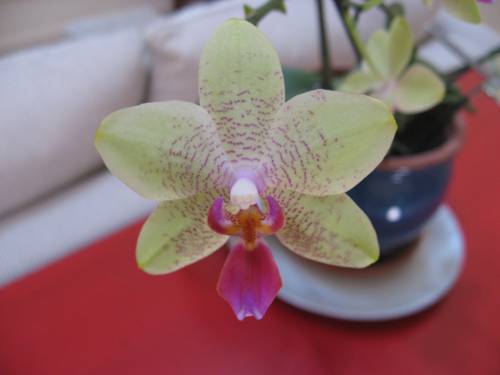
FAQ About Indoor Orchid Care for Beginners

What are the basic requirements for growing orchids indoors?
Orchids require a combination of light, water, and humidity to thrive indoors. They need bright, indirect sunlight, as direct sunlight can scorch their leaves. Watering should be done according to the orchid species and season, typically every 5-12 days, ensuring the roots are not left in waterlogged conditions. Maintaining a humidity level of 40-60% is beneficial for most orchids.

How often should I water my indoor orchids?
The watering frequency for indoor orchids depends largely on the type of orchid and the environment. Generally, orchids need to be watered every 5-12 days. It's important to let the potting medium dry out between waterings. Overwatering can lead to root rot, so constantly check the moisture level in the pot.

What type of potting medium is best for orchids?
Orchids often thrive in a potting medium that provides good drainage and aeration. Common choices include bark, sphagnum moss, or coconut husks. These materials allow air to circulate around the roots while retaining just enough moisture. The best medium can vary depending on the orchid species and indoor conditions.

Do orchids need direct sunlight indoors?
No, orchids do not need direct sunlight. In fact, direct sunlight can harm them by causing leaf burn. Orchids thrive best in bright, indirect light. Placing them near an east or west-facing window with sheer curtains can provide the ideal lighting conditions.

How can I provide adequate humidity for my indoor orchids?
Maintaining appropriate humidity levels for orchids can be achieved by using a humidifier in the room, placing the orchid pot on a humidity tray, or misting the leaves with water. Aim for humidity levels between 40-60% for optimum growth. Grouping plants together can also help in maintaining humidity.

What are some common signs that an indoor orchid is unhealthy?
Unhealthy orchids might show signs such as yellowing leaves, wilting, bud blast (when buds fall off before blooming), and root rot. These symptoms often indicate problems with watering, light conditions, or pests. Addressing these issues promptly can help revitalise the plant.

Can orchids be grown in regular potting soil?
No, regular potting soil is not suitable for orchids as it retains too much moisture and lacks the aeration their roots require. Orchids should be planted in specialized potting mediums such as bark or sphagnum moss that mimic their natural environment.

How do I know when to repot my indoor orchid?
Orchids should be repotted every 1-2 years, or if the potting medium has broken down significantly. Signs that repotting is necessary include roots growing out of the pot, a foul odor from the medium, or the orchid not growing as vigorously as before. It is best to repot after the orchid has finished blooming.

What temperature range is ideal for indoor orchids?
Most indoor orchids thrive in temperatures ranging from 60°F to 80°F (16°C to 27°C). They prefer cooler temperatures at night and warmer during the day. Avoid placing orchids near drafts or in extreme temperatures, which can stress the plants.

Is it necessary to fertilize orchids?
Yes, fertilizing orchids is essential for their growth and blooming. Use a balanced orchid fertilizer, typically with an N-P-K ratio of 20-20-20, once a month during the growing season, which is spring and summer. Fertilize at half the recommended strength to avoid over-fertilization.
